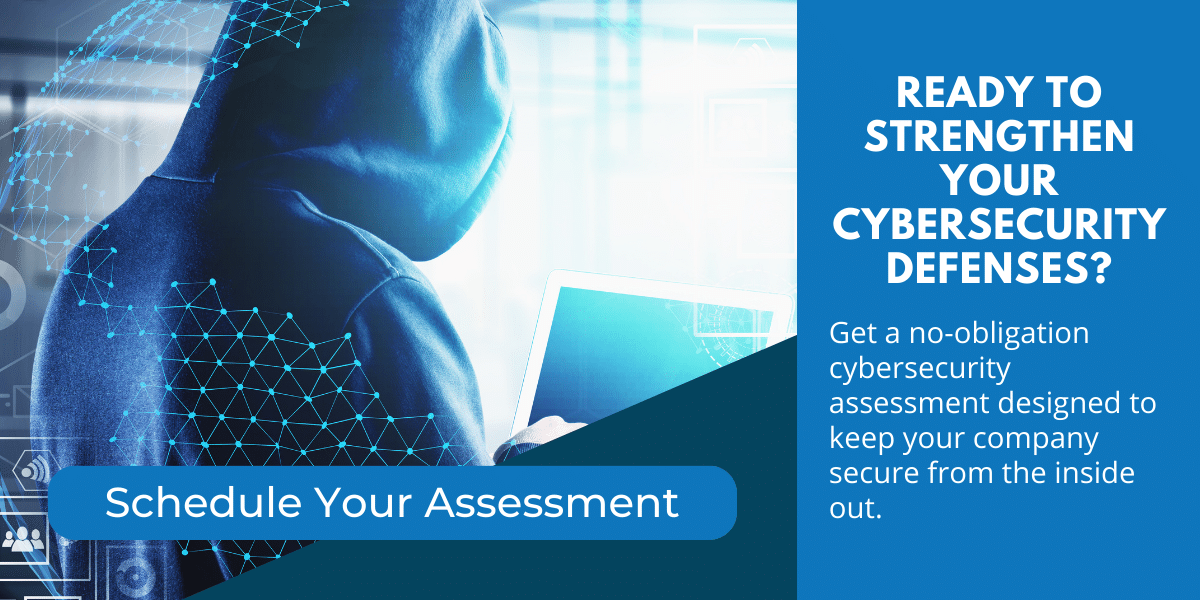In today’s digital age, small business security is vital. Small businesses are increasingly becoming targets for cyberattacks. With valuable data, sensitive information, and financial resources at risk, it’s crucial for business owners to prioritize security to safeguard any sensitive information your business may have.
Small business security isn’t just about installing a few antivirus programs and hoping for the best; it requires a comprehensive approach that requires careful planning to cover all of its bases.
In this blog, we’ll provide you with a small business security checklist to help fortify your business against potential threats and mitigate risks before they happen.

Identity and Access Management (IAM)
The first step in securing your small business is establishing robust Identity and Access Management practices. As highlighted in our previous blog, here’s how you can ensure your IAM is up to par:
- User Authentication: Implement strong authentication methods such as multi-factor authentication (MFA) to ensure only authorized personnel can access your systems and data.
- Role-Based Access Control (RBAC): Assign specific roles and permissions to employees based on their job responsibilities. This limits access to sensitive information only to those who need it.
- Regular Audits: Periodically review user access rights and privileges to identify and rectify any unauthorized or unnecessary access.
Data Protection
Your business’s data is one of its most valuable assets and protecting it should be a top priority. Here’s how you can accomplish that:
- Data Encryption: Encrypt sensitive data both in transit and at rest. Use secure encryption protocols for email, file storage, and data transmission.
- Regular Backups: Implement automated backup procedures for critical data. Ensure backups are stored offsite in a secure location.
- Data Classification: Categorize your data based on its sensitivity level. Apply appropriate security measures, such as access controls and encryption, based on the classification.
- Data Retention Policies: Establish clear data retention policies to determine how long data should be kept and when it should be securely destroyed.

Cybersecurity Training and Awareness
Your employees can be your greatest asset or your weakest link in terms of security. Ensure they’re set up for success with the following:
- Security Training: Provide cybersecurity training to all employees. Teach them about common threats like phishing and social engineering, and how to recognize them.
- Incident Response Plan: Develop an incident response plan and ensure all employees know their roles in case of a security breach.
- Regular Updates: Keep employees informed about the latest security updates and best practices. Conduct regular security awareness sessions.
A recent example of the need for Cybersecurity Awareness training is the MGM hack, which resulted in a 10-day computer shutdown that has cost MGM about $80 million in losses. The initial entry point was through social engineering, where the hackers found an MGM employee on LinkedIn, and impersonated them with the organization’s service desk to gain access to their account.
Network Security
Protecting your network infrastructure is vital to safeguarding your business. Utilize the following to increase your network security:
- Firewalls: Implement robust firewalls to monitor and filter incoming and outgoing network traffic. Configure them to block unauthorized access.
- Regular Patch Management: Keep all software, operating systems, and network devices up to date with the latest security patches.
- Secure Wi-Fi: Set up a secure Wi-Fi network with strong encryption and regularly change Wi-Fi passwords. Segment your network to isolate sensitive data.
Device Security
Securing the devices used in your business operations is crucial — particularly if you have a remote or hybrid environment. Device security includes:
- Mobile Device Management (MDM): Use MDM solutions to manage and secure mobile devices used for business purposes. Enforce device encryption and remote wipe capabilities.
- Endpoint Security: Install reputable antivirus and anti-malware software on all devices. Enable automatic updates and regular scans.
- Password Policies: Enforce strong password policies for all devices and accounts. Use complex passwords or passphrases, and require periodic password changes.
Compliance and Regulations
Stay compliant with relevant laws and regulations, especially concerning data privacy:
- GDPR and Data Privacy: If applicable, comply with data protection regulations like GDPR. Ensure you have a clear privacy policy and obtain customer consent for data processing.
- HIPAA Compliance: If your business deals with healthcare data, ensure HIPAA compliance and maintain patient confidentiality.
- Regular Compliance Audits: Periodically conduct compliance audits to ensure adherence to all relevant laws and regulations.

Incident Response Plan
Even with robust security measures, it’s also essential to have a plan in place for when security incidents occur. A response plan typically covers:
- Incident Detection: Implement intrusion detection systems and security event monitoring to detect potential threats in real-time.
- Response Team: Establish an incident response team with clearly defined roles and responsibilities.
- Communication Plan: Develop a communication plan for notifying stakeholders, customers, and regulatory bodies in case of a data breach.
Cyber Insurance & Security Audits
Lastly, consider investing in cyber insurance to mitigate financial risks associated with security breaches in addition to getting regular cyber audits:
- Cyber Insurance Policy: Work with insurance providers to tailor a policy that suits your business needs. Ensure it covers data breach costs, legal expenses, and business interruption.
- Penetration Testing: Conduct regular penetration testing to identify vulnerabilities in your systems and networks.
- Security Audits: Periodically engage third-party security experts to conduct comprehensive security audits of your business.

Secure Your Future with ANAX
To be successful, your small business must prioritize security to protect its data, reputation, and financial stability. Implementing the small business security checklist outlined above will go a long way in fortifying your business against potential threats.
Remember that security is an ongoing process, and staying vigilant is key to safeguarding your business in the digital age. By following these practices and regularly reviewing your security measures, you can significantly reduce the risk of falling victim to cyberattacks and data breaches.
Follow Us!





Recent Comments